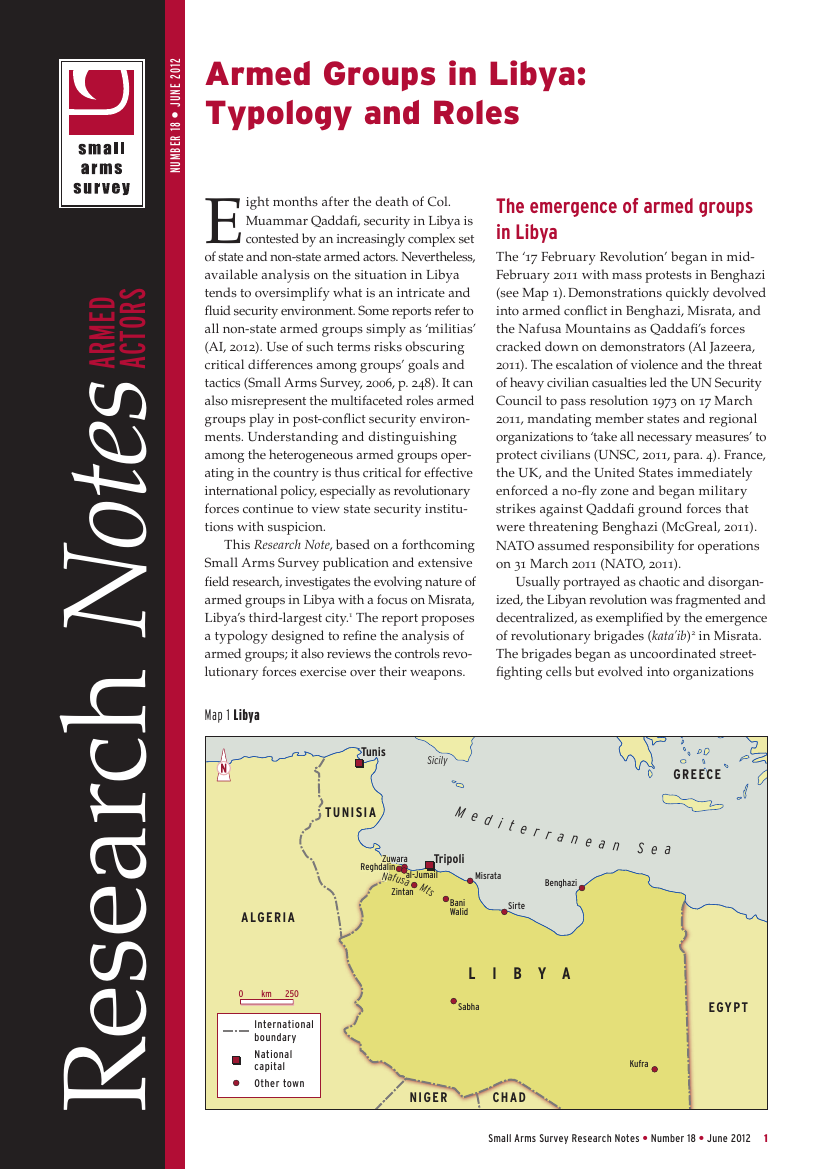
Armed Groups in Libya: Typology and Roles (Research Note 18)
This Security Assessment in North Africa (SANA) project paper on armed groups in Libya shows that the revolutionary brigades formed to topple Gaddafi are still a cohesive military force. The study highlights the emergence of the National Shield, which it calls an ‘army-in-waiting’, and suggests there is a power struggle over the rebuilding of the Libyan National Army as revolutionary commanders still distrust much of the leadership of the Libyan National Army and the Ministry of Defence who ran the war against them.
Armed Groups in Libya: Typology and Roles, a new Small Arms Survey Research Note, is based on seven months of field studies in Misrata, Benghazi, Sirte and Tripoli by Brian McQuinn from Oxford University.
The research suggests that Libya’s revolutionary forces still command 75 to 85 per cent of the seasoned fighters, and hold a similar proportion of weapon stockpiles not controlled by the government. In Misrata, 236 distinct armed groups registered with the Misratan Union of Revolutionaries, accounting for almost 40,000 brigade members. McQuinn’s study links the demilitarisation of revolutionary brigades to the creation of a legitimate national army. Despite calls by commentators for revolutionary brigades to join the national army, the study shows that there is a power struggle over how it is rebuilt.
The study distinguishes between four types of armed groups operating in Libya: revolutionary brigades, unregulated brigades, post-revolutionary brigades and militias. It details their different histories and objectives, highlighting that it is critical to distinguish between them for effective international policy. It notes that most of the available analysis to date has tended to label them all as ‘militias’.
Also available in ARABIC.
Have your say about Small Arms Survey publications and products: take 5 minutes to fill out our questionnaire.